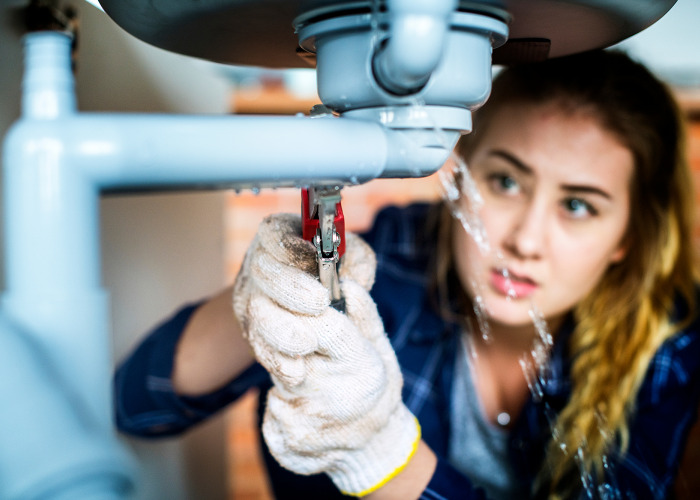Plumbing issues tend to be nightmarish and expensive to fix, but only if you aren’t sure how to actually fix them. Having some basic knowledge of plumbing is beneficial. For many common plumbing problems, all you’ll need to do is unscrew, unclog, and replace. Most plumbing issues are solved by simple, noninvasive repairs any homeowner can tackle.
You might be surprised at how many problems you can tackle on your own after a few good YouTube videos of some professional plumbers. Sewer repair and drain cleaning might be a better fit for a plumbing company but here are a few smaller projects to try your hand as a plumber.
Dripping faucets
The monotonous plink plink plink of a leaky faucet gets infuriating fast. Beyond its annoyance, leaky faucets can actually rack up a hefty addition to your water bill. Fortunately, repairing dripping faucets takes about as much time as it does skill. As you examine your faucet, try wiggling the handle around. Does the leak get worse? Is it leaking at the base of the faucet, rather than the spout? If so, you likely have an issue with the O ring in your faucet. Replacing a worn O ring is a cheap fix, definitely doable in an afternoon.
Another issue you might have with your leaking faucet is a loose connection point or two. There are a few different parts that make up each faucet, and if there’s a loose or damaged connection point in the inner workings, you’ll likely find yourself with a leak. Check the washers connecting the valves and pipes of your faucet to see if any are loose.
Low Water Pressure
You’ll likely notice your water pressure’s suffering every time you take a shower or try to wash your dishes. Low water pressure is a wildly common plumbing issue, typically caused by clogged aerators. The aerator in your sink, shower, and tub faucet is a thin sheet of metal mesh. As you use it, minerals can build up on the mesh.
You’ll begin to lose water pressure over time as water struggles to leave the spout. You can unclog most mineral buildups by removing the aerator and cleaning it. If it seems too far gone, consider replacing it. It’s a good idea to replace your aerators every few years anyway.
Another common cause of low water pressure is a water valve that’s not turned all the way on. Sometimes the mainline is just a hair off, or a line to your shower or sink may be cranked only halfway. In that case, all you need to do is turn it all the way on!

Cold or lukewarm water
Few things are as unpleasant as an unexpected cold shower. As you’d expect, this shouldn’t be happening. Some water tanks are just too small, especially if you have a big family, but they can also get damaged. Old age may be the debilitating factor for your water tank, or corrosion and sediment build-up.
A corroded tank won’t function as it’s intended to. Neither will a tank that’s full of sediment. Make it a yearly habit to drain your water heater and give it a good clean to get rid of the sediment. You may also need to relight the pilot light, which is an easy fix or replace the heating element in your tank.
Clogged drains
If your drain won’t drain, you likely have a clog. Shower drains commonly clog with hair, which can be removed with a patient hand and a needle-nosed plier.
For toilet clogs, break out your plunger.
Sink clogs can be more complicated. You don’t want to use your toilet plunger here. Remove the drain pop-up in bathroom sinks and see if you can remove the offending material (toothpaste cap, more hair, etc.). If need be, you can always remove the pipes under your sinks to remove any larger clogs. If nothing helps, you may have a clog deep in your pipes, which a plumber can help with.
Leaking toilet
Leaking toilets are often silent killers. Most leaks happen inside, invisibly blowing through hundreds of gallons of water. Check on the state of the tank’s rubber flapper, which is responsible for creating a water-tight seal between the tank and the bowl. If it’s loose, it’ll leak. Toilet flappers are cheap and easy to replace–you can replace the entire flushing system for about twenty dollars (without much plumbing knowledge). To test for internal toilet leaks, drop some food coloring into the tank. It should stay in there until you flush; if it doesn’t, you have a leak.






